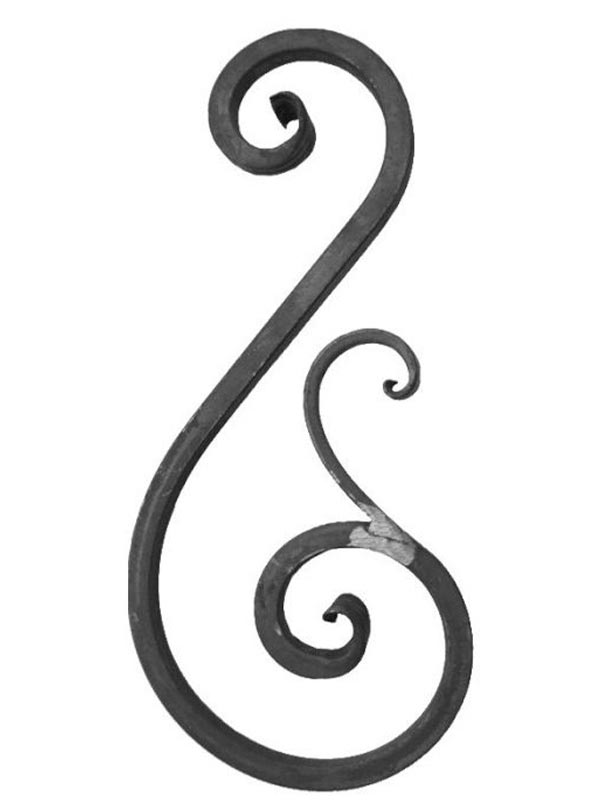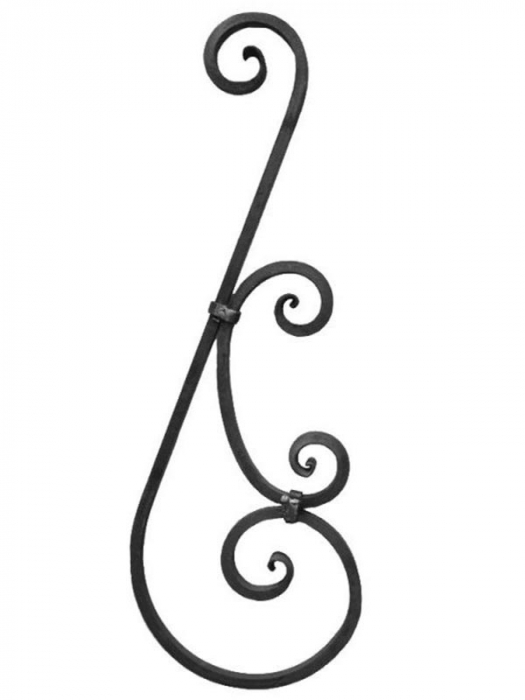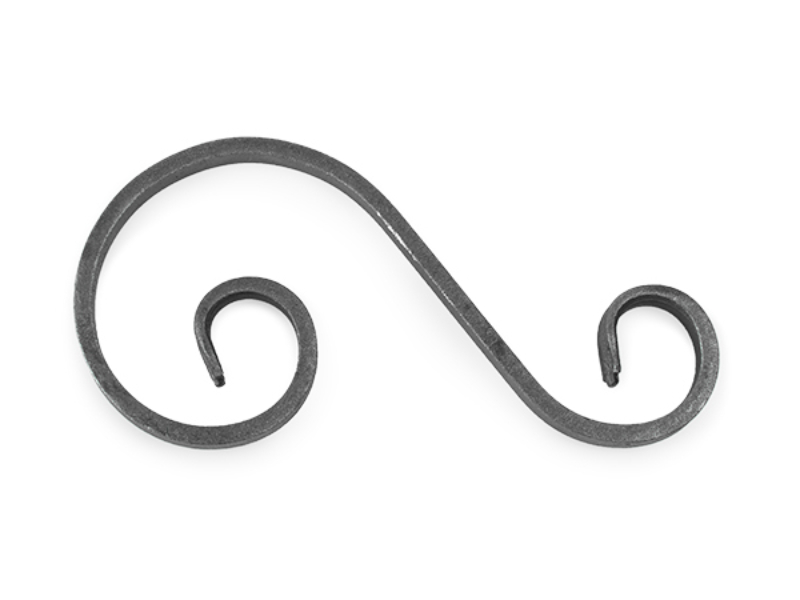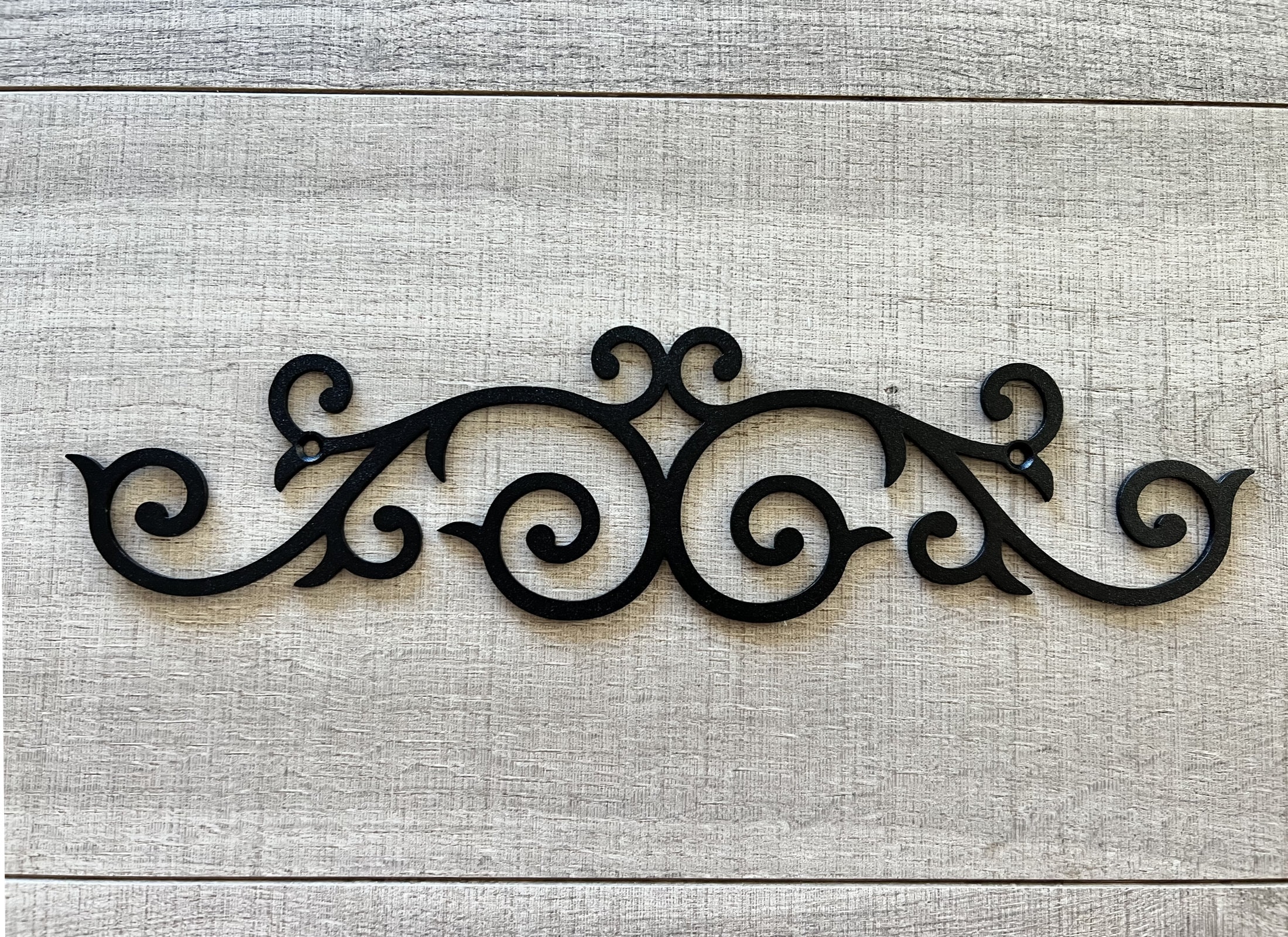Decorative metal scrolls have become a popular choice for homeowners and designers alike, adding elegance and character to various spaces. In this comprehensive guide, I’ll share insights, tips, and personal experiences with metal scrolls, highlighting how these artistic pieces can transform your environment. Whether you’re an interior design enthusiast or just someone looking to spruce up your home, this article is for you!
What are Decorative Metal Scrolls?
Decorative metal scrolls are intricately designed metal pieces that often feature swirling, curly patterns. They are used in various applications, including furniture, wall art, gates, and fences.
The History of Metal Scrollwork
The art of scrollwork dates back centuries, originating in ancient civilizations. Metal scrolls were primarily used in architecture and decorative arts, with each culture adding its unique twist. In the modern era, these designs have evolved to fit contemporary styles while retaining their timeless appeal.
Why Choose Decorative Metal Scrolls?
Decorative metal scrolls offer multiple benefits that make them an attractive choice for enhancing the aesthetic of your home or business.
Durability and Longevity
One of the significant advantages of metal scrolls is their durability. Unlike wood, which can warp or rot over time, metal is resistant to the elements, making it ideal for both indoor and outdoor use.

Versatile Design Options
Decorative metal scrolls come in a wide variety of designs and finishes, allowing you to choose the perfect match for your décor style. From classic to modern, the possibilities are endless.
Easy Maintenance
Maintaining metal scrolls is simple. Regular dusting and occasional cleaning with a mild detergent can keep them looking as good as new.

Where to Use Decorative Metal Scrolls
Metal scrolls can be used in various locations throughout your home or business, creating focal points and enhancing overall aesthetics.
Wall Art
Using decorative metal scrolls as wall art can add dimension and interest to your space. They can be hung alone or combined with other artworks for a stunning gallery wall.

Furniture Accents
Incorporate metal scrolls into furniture design, such as on tables, chairs, or cabinet doors. This can elevate standard pieces and introduce a unique character to your furniture.
Gates and Railings
Metal scrolls are popular in designing gates and railings. They provide security while also enhancing the curb appeal of your property.

Popular Styles of Decorative Metal Scrolls
Exploring the various styles can help you find the perfect metal scroll design that resonates with your taste.
Classic Scrolls
Classic scrolls are characterized by smooth, flowing lines and often feature intricate designs inspired by historical elements. These are perfect for traditional and rustic styles.

Modern Scrolls
Modern scrolls tend to have cleaner lines and minimalist designs. They work well in contemporary settings, providing a sleek and sophisticated touch.
Industrial Scrolls
With the rise of the industrial design trend, metal scrolls featuring raw finishes and edgy designs have gained popularity. These add a bold statement to any space.

Choosing the Right Material
Metal scrolls can be made from various materials, each with its unique properties.
Wrought Iron
Wrought iron is a popular choice due to its strength and malleability. It can be shaped into intricate designs and is often used in gates and railings.

Aluminum
Aluminum is lightweight and resistant to rust, making it ideal for outdoor use. It can be finished in various colors, adding versatility to your designs.
Steel
Steel offers incredible durability and can be finished or painted to suit your design preferences. It’s commonly used in both residential and commercial applications.
DIY Ideas for Decorative Metal Scrolls
If you’re feeling creative, why not try making your decorative metal scrolls? Here are some ideas to get you started.
Customized Wall Art
You can create your own wall art by bending metal strips into scroll patterns and painting them to match your décor. This adds a personal touch to your space.
Artistic Furniture Accents
Consider adding metal scrolls to furniture pieces, like a simple coffee table, to elevate its style. You can attach small scrolls to the legs or sides for a unique look.
Comparison of Decorative Metal Scrolls Materials
| Material | Durability | Rust Resistance | Weight | Cost |
|---|---|---|---|---|
| Wrought Iron | High | Low (requires maintenance) | Heavy | Medium |
| Aluminum | Medium | High | Light | Medium |
| Steel | Very High | Medium (with proper coating) | Heavy | High |
Tips for Installing Decorative Metal Scrolls
Proper installation can significantly enhance the overall appearance of decorative metal scrolls. Here are some tips to ensure successful installation:
Gather the Right Tools
Before starting the installation process, ensure you have all the necessary tools, such as drills, screws, anchors, and a level.
Plan Your Design
Visualize how you want the scrolls to be arranged before attaching them to walls or furniture. This helps you avoid errors and ensures a cohesive look.
Secure Properly
Make sure to secure the decorative scrolls properly to prevent them from falling or shifting. Use appropriate anchors for the wall type if you’re hanging them.
Maintenance of Decorative Metal Scrolls
Taking care of your decorative metal scrolls will ensure they last for years to come. Here’s how to maintain their beauty:
Regular Cleaning
Dust your scrolls regularly using a soft cloth to maintain their shine. For deeper cleaning, use a mild soap solution and a damp cloth, then dry thoroughly.
Check for Rust
If you notice any rust or wear, address it immediately. Use sandpaper to remove rust and apply a protective sealant to prevent future corrosion.
Pros and Cons of Decorative Metal Scrolls
Pros
- Durable and long-lasting
- Variety of styles and designs
- Low maintenance requirements
- Enhances aesthetic appeal
Cons
- Can be heavy, requiring secure installation
- Potential for rust if not properly maintained
- Initial cost may be high for quality materials
Frequently Asked Questions (FAQs)
1. What are the best materials for decorative metal scrolls?
The best materials include wrought iron, aluminum, and steel. Each has its own benefits and drawbacks, so choose based on your specific needs and preferences.
2. How do I incorporate decorative metal scrolls into my home decor?
You can use them as wall art, furniture accents, or even in outdoor spaces like gates and railings. The key is to find a style that complements your existing decor.
3. Are decorative metal scrolls weather-resistant?
Many decorative metal scrolls, particularly those made from aluminum or coated steel, are weather-resistant. However, wrought iron may require more maintenance to prevent rust.
4. Can I paint decorative metal scrolls?
Yes! Painting metal scrolls is a great way to customize their look. Just make sure to use paint designed for metal surfaces for the best results.
5. How do I clean decorative metal scrolls?
Regularly dust them with a soft cloth and, if necessary, clean with mild soap and water. Ensure they dry thoroughly to prevent rusting.
Conclusion
Decorative metal scrolls offer an incredible way to add style, elegance, and durability to any space. Whether you’re decorating your home or enhancing a commercial area, these versatile pieces can bring a unique touch to your design. I hope this guide has inspired you to explore the world of decorative metal scrolls and consider how they can elevate your space. Happy decorating!